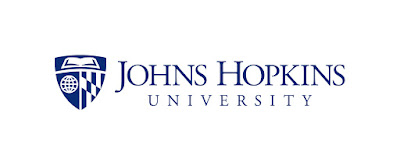INTRODUCTION ON JOHN HOPKINS UNIVERSITY
The Johns Hopkins University (commonly referred to as Johns Hopkins, JHU, Hopkins) has been an American private research university in Baltimore, Maryland. Founded in 1876, the university was named after its 1st supporter, the American entrepreneur, abolitionist, and philanthropist Johns Hopkins. His $7 million sponsor of which half was financed for the establishment of The Johns Hopkins Hospital—was the largest philanthropic gift in the whole history of the United States at that time. Daniel Coit Gilman, who was inaugurated as the institution's first president on February the 22nd, year 1876, led the university to revolutionize higher education in the U.S. by integrating research and teaching. By adopting the concept of a graduate school from Germany's ancient Heidelberg University, Johns Hopkins University is known to be the first research university in the United States.
ACADEMICS AT JOHNS HOPKINS UNIVERSITY
The full-time, 4 year undergraduate program has a more selective rate with low transfer-in and a high graduate co-existence. The cost of attendance each year is about $60,820; however, the average need met is 99%. The university is one of fourteen founding members from the Association of American Universities (AAU); it is also a member of the Consortium on Financing Higher Education (COFHE) with the Universities Research Association (URA).
RESEARCH AT JOHNS HOPKINS UNIVERSITY
The opportunity to participate in valuable research is one of the main characteristics of Hopkins' undergraduate education. About 80 percent of undergraduates do independent research, but often alongside top researchers. In FY 2013, Johns Hopkins received $2.2 billion in federal research grant which is more than any other U.S. university for the 35th consecutive year. Johns Hopkins has had about seventy-seven members of the Institute of Medicine, seventeen members of the National Academy of Engineering, forty-three Howard Hughes Medical Institute Investigators, and sixty-two members of the National Academy of Sciences. About 37 Nobel Prize winners have been affiliated with the university as alumni or faculty members.
Between 1999 and 2009, Johns Hopkins was among the most cited university in the whole world. It attracted nearly 1,222,166 citations and produced 54,022 papers under its name, ranking number 3 on a global scale (after Harvard University and the Max Planck Society) in the number of total citations published in Thomson Reuters-indexed journals over twenty-two fields in the United States.
STUDENT'S LIFE AT JOHNS HOPKINS UNIVERSITY
of Charles Village, which is the region of North Baltimore surrounding the university, has undergone various restoration projects, and the university has slowly bought the property around the school for additional student housing and dorm rooms. The Charles Village Project, completed in 2008, brought new commercial spaces to the neighborhood. The project comprised of Charles Commons, a new and new generation residence hall that includes popular retail franchises.
Hopkins also invested in bettering campus life with an arts complex in 2001, the Mattin Center, and a three-story sports facility named as the O'Connor Recreation Center. The large on-campus dining facilities at Homewood were renovated in the summer of 2006.
Quality of life inside the university is enriched by the proximity of neighboring academic institutions, including Loyola College, UMBC, Goucher College, Maryland Institute College of Art (MICA), and Towson University, as well as the nearby neighborhoods of Hampden, Fells Point, the Inner Harbor, and Mount Vernon.




No comments:
Post a Comment